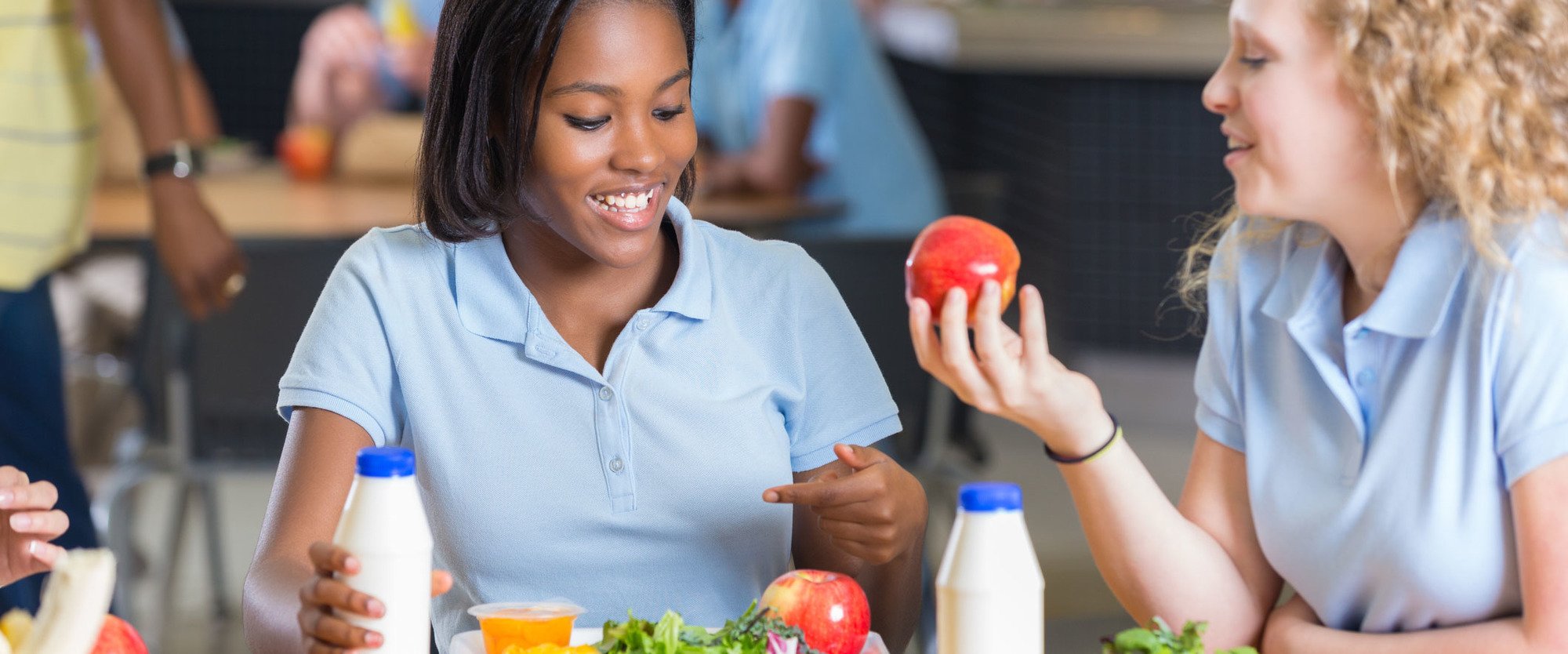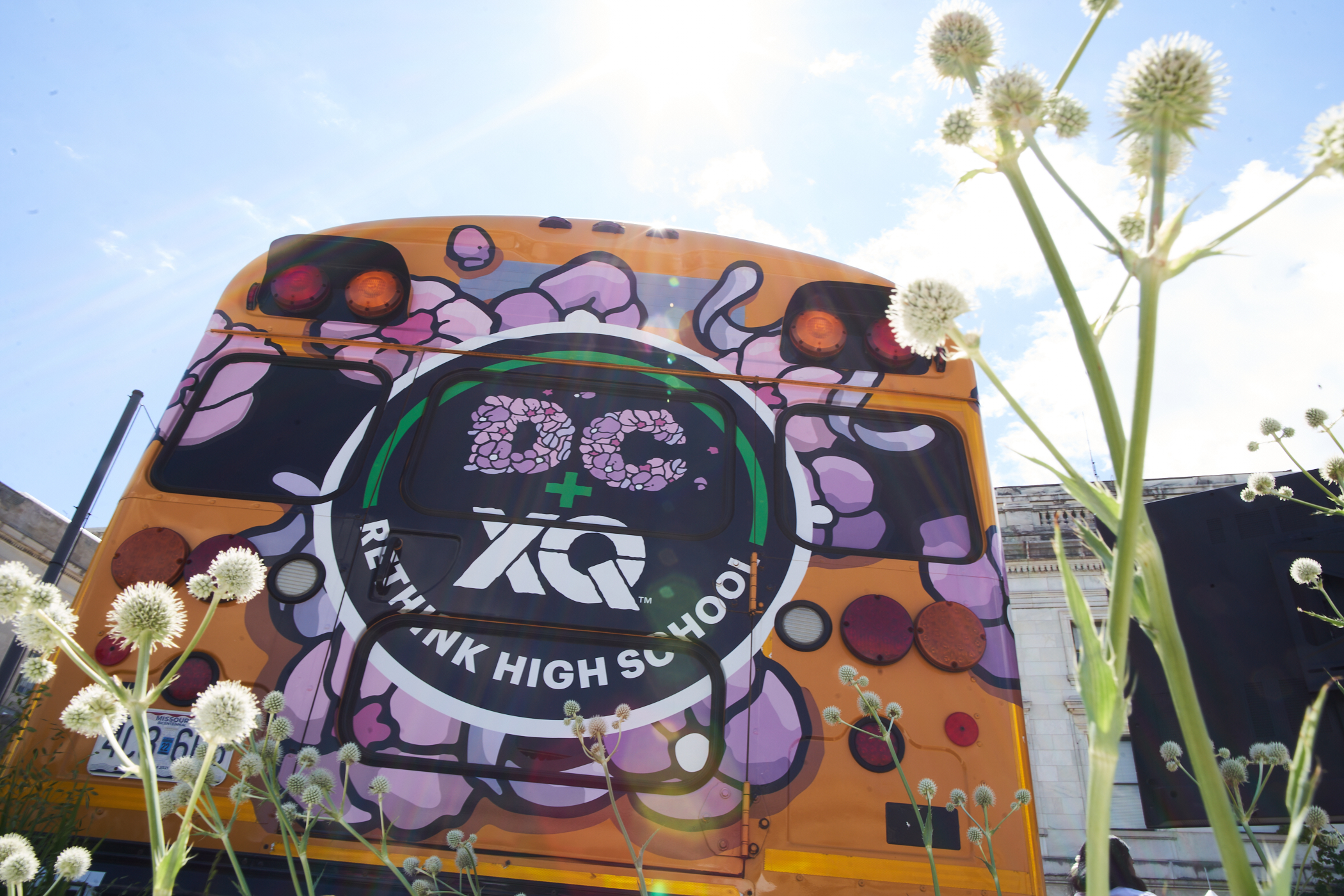What Will School Meals Look Like With School Re-openings and COVID-19
The outbreak of COVID-19 has placed additional pressure on school meal programs. And now, students across the country cannot get the food they need.

School meals are critical to students’ well-being and readiness to learn. Research shows that students who rely on school meals get half of their daily food intake at school (Cullen & Chen, 2017). Many families depend on school meals because they offer reliable nourishment, while helping to ease the financial burden many families face. In fact, research has also shown that school meals are healthier than meals brought from home or elsewhere: students consume more fruits, vegetables, and milk in school meals, and they are less likely to consume desserts and snack items (Minaya & Rainville, 2016). All of this has an impact on academic success: students who eat breakfast the morning of a standardized test have significantly higher scores in spelling, reading, and math, compared to those who do not eat breakfast (Ptomey et al., 2016).
The outbreak of COVID-19, however, placed additional pressure on school meals programs. Schools closed their doors last spring, switching to a remote learning environment and bringing into question whether or not meals could be delivered even if school was taking place at home. School nutrition staff worked tirelessly to ensure that students could still access the meals they needed. More than that, the COVID-19 outbreak and its economic ripplings meant that school meals became the only way many children could get the food they needed. With the job losses triggered by the pandemic, one in four children are estimated to be struggling with hunger, which means school meals will be more essential than ever, especially as the economic consequences of this pandemic grow (Feeding America, 2020).
To properly understand the increased importance of school meals as well as the logistics behind moving breakfast and lunch to meet distance learning requirements, we must understand how school meals operate as a federal program first. In this post we hope to delineate how this program functions, how they exist in this current moment, and how we can ensure that students are getting the meals that they need—especially with reimagined in-person learning, continued remote learning, or a combination of both.
What You Didn’t Know About School Meals
You may be wondering where school meals come from and who funds them. On the federal level, school meal programs fall under the National School Lunch Program and the School Breakfast Program, both which get funding from Congress and stay intact regardless of the federal budget status. The United States Department of Agriculture (USDA) oversees these programs, provides nutrition guidelines, and passes along federal funding to states to allocate to schools serving meals. In turn, states oversee the operations of these programs at the local level (at schools), and ensure school nutrition departments get the appropriate funding. This graph illuminates how school meals reach kids.
On the local level, school nutrition departments manage meal services for all schools in the district. School meals must follow strict guidelines set by USDA to ensure that students get the nutrition that they need each day. In exchange, school nutrition departments receive federal funds for each meal served to help offset the cost. The exact amount per meal can vary based on a number of factors, such as a student’s household income level.
School nutrition departments operate as nonprofit businesses. Generally, they are expected to be self-sustaining, and must separate their budget from other district budgets. This ensures that the money used to provide kids school meals is not in competition with the money used to provide education necessities—like desks, books, and teachers’ salaries. Additionally, all school nutrition revenue, whether from federal reimbursements, student meal payments, or other sources, must be reinvested back into the school meals programs. Oftentimes, that reinvestment means the money goes towards better equipment to prepare and serve meals, local vendors who supply food, and the local school nutrition staff, who make school meals healthy, delicious, and easily accessible to students. Because school nutrition departments are local businesses, when you support school meals, you directly support the local economy and hungry students.
Adapting School Meals to Remote Learning, School Reopening, and Summertime Needs
When schools closed this past spring, USDA granted schools various meal program flexibilities, including one to serve meals to all students free of charge. Many schools took advantage of that option, even if they usually charged students for school meals. Other local organizations also helped out and served free meals to kids and teens. Many of these local organizations have continued serving meals through the summer, ensuring that students get the nutrition they need to stay healthy and return to school (or the virtual classroom) ready to learn.
These ‘summer meals’ are funded by the USDA—like their school year counterparts. Additionally, the USDA funding goes towards food, supplies, and the salaries of the staffers that are working hard to make sure every child and teen that needs a meal, gets a meal. The more kids participate, the stronger these sites are. It’s a win-win!
Just like during school closures in the spring, USDA provided schools and other summer meals sites with special permissions that allow sites to offer meals in the safest manner possible. For example:
- Although kids and teenagers usually had to eat summer meals on-site, now they can take their meal home.
- Some organizations may even deliver meals directly to your home or along a bus or mobile route.
- Parents and guardians can pick up meals on behalf of their kids.
- Sites can give you more than one meal at a time. That can be two meals for the same day or even meals to cover multiple days.
How Will School Meals Work with Fall Reopenings
This upcoming school year will bring more challenges as schools navigate the evolving coronavirus pandemic. But just like in the spring, school nutrition departments must be creative and nimble in serving meals this fall. School nutrition departments may incur added costs, such as PPE, and special packaging to guarantee meals get delivered safely to classrooms or homes. Moreover, there is a lot of uncertainty as school nutrition departments wait for more guidance from the USDA and for their districts to make decisions about scheduling. Whether schools open normally, stay remote, or do something in between, school meals this year are sure to be different.
Although few have made decisions yet, school nutrition departments are considering five primary options for serving meals this school year:
- Traditional Cafeteria Service: Some districts plan to operate a traditional model, where students eat meals in the cafeteria, using reinforced PPE and social distancing guidelines. Students in these models would still go through the cafeteria lines as they normally would, and eat in the cafeteria, common spaces, or outside (weather dependent).
- Meal Pick-up from the Cafeteria: The cafeteria or gymnasium can be congested places to eat, so districts are considering students grabbing meals from the cafeteria, and consuming meals in either the classroom or outdoors where and when possible.
- Meals Delivered to the Hallway/Classroom: To lower students’ and school nutrition employees’ risk, a popular option for schools across the country is delivering the meals to hallways or classrooms for students to pick up. In this model, students eat with their classmates in their classroom.
- Meals Delivered to Homes: Students learning remotely would either take meals home with them on days that they attend in-person classes, or have meals delivered to their home via school bus or van.
- Meals Available for Pick-up: Similar to the approach many districts took this past spring, pick-up meals are an option if students are learning remotely. Caregivers and students would go to a pick-up location, likely on campus, to grab meals.
How to Support School Meals and The Students Who Need Them
No matter the model, participating in the school meals programs will help your school nutrition department continue serving meals to the students who need them. And, to help your school nutrition department even more, consider calling your members of Congress to tell them how important school meals are to you and ask them to give school nutrition departments the funding and flexibility they need this year.
To learn more about summer meals and school meals, visit No Kid Hungry’s Center for Best Practices. There you can find information and free resources on summer meals and back-to-school efforts. To learn more about reopening plans, check out our blog on reopening high schools and the potential for a re-focus on equity.









